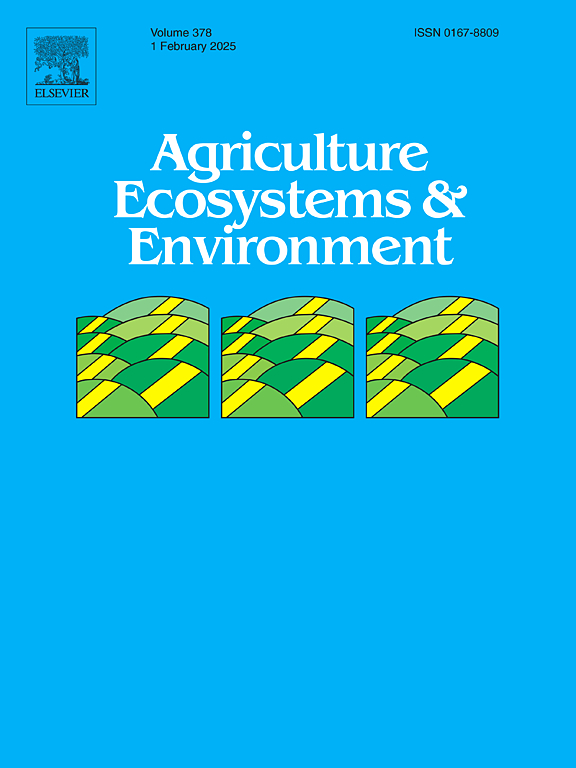Well-designed multi-species grassland mixtures enhance both soil carbon inputs and aboveground productivity
IF 6
1区 农林科学
Q1 AGRICULTURE, MULTIDISCIPLINARY
引用次数: 0
Abstract
Increasing species diversity in managed grasslands may serve multiple environmental purposes, especially when legumes are included. Yet, how to design such legume-based grassland mixtures to increase soil C inputs remains unclear. This is particularly true for C inputs into deep soil layers, and via rhizodeposition. This field study investigated the effects of mixture design on root C and net-rhizodeposition to 1 m depth in managed grasslands with the aim to combine high soil C inputs with high aboveground productivity. Net-rhizodeposition was defined as accumulated C lost from roots, which remained in the soil at the end of the growing season. We used multiple-pulse isotopic labelling with 13C-CO2 to quantify the soil C inputs from roots and rhizodeposition in a range of species mixtures fertilized with 75 kg N ha−1, and in pure stand perennial ryegrass with different N fertilizer rates (75 vs 300 kg N ha−1). Mixtures comprised productive legumes (Trifolium repens, Trifolium pratense) with non-legumes (grasses: Lolium perenne, Festuca arundinacea; forbs: Cichorium intybus, Plantago lanceolata) in 2-species mixtures and in a 6-species mixture, and an 18-species mixture with additional species from the three functional groups. Our results showed increased belowground C input with species richness up to six without compromising aboveground yield, but when species richness increased further, root C was substantially reduced. Total net-rhizodeposition measured to 1 m depth was reduced with higher N availability (fertilizer or legume inclusion) independently of increasing root biomass. Within mixtures, the 2-species mixtures with red clover had lower rhizodeposition compared to white clover. Overall, the 6-species mixture represented the best option to balance both high root C with rhizodeposited C, as well as maintaining a high and stable aboveground yield similar to the high-fertilized pure stand grass. This study shows how species design of legume-based mixtures – not species richness per se – can increase belowground C input to depth in intensively managed grasslands without compromising aboveground productivity. Thus, our results reveal an agronomic option to steer soil C storage via rhizodeposition and root C, providing quantitative evidence to better understand the relevance of these pools for C cycling.
求助全文
约1分钟内获得全文
求助全文
来源期刊

Agriculture, Ecosystems & Environment
环境科学-环境科学
CiteScore
11.70
自引率
9.10%
发文量
392
审稿时长
26 days
期刊介绍:
Agriculture, Ecosystems and Environment publishes scientific articles dealing with the interface between agroecosystems and the natural environment, specifically how agriculture influences the environment and how changes in that environment impact agroecosystems. Preference is given to papers from experimental and observational research at the field, system or landscape level, from studies that enhance our understanding of processes using data-based biophysical modelling, and papers that bridge scientific disciplines and integrate knowledge. All papers should be placed in an international or wide comparative context.
 求助内容:
求助内容: 应助结果提醒方式:
应助结果提醒方式:


